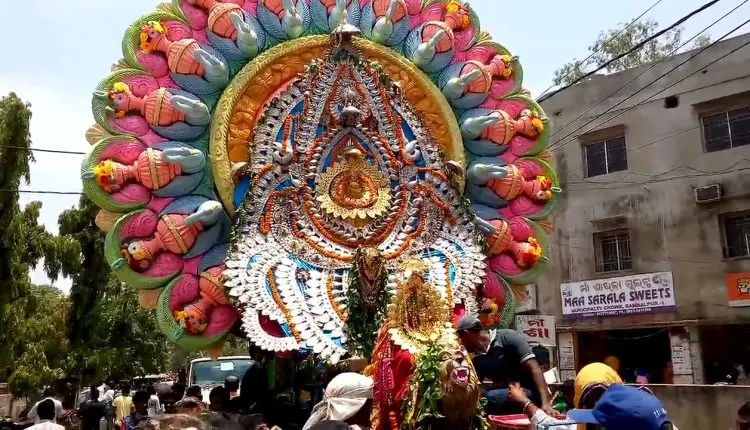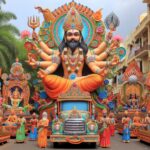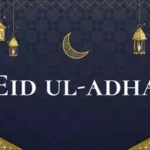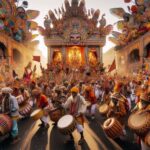Sital Sasthi, a significant and vibrant festival in the state of Odisha, India, celebrates the divine marriage of Lord Shiva and Goddess Parvati. Observed on the sixth day of the bright fortnight in the month of Jyeshtha (May-June), this festival is a unique blend of religious rituals, cultural performances, and community participation. Rooted in mythology and steeped in tradition, Sital Sasthi not only marks the divine union but also heralds the onset of the monsoon season, symbolizing fertility and rejuvenation.
Mythological Significance
The origins of Sital Sasthi are deeply entwined with Hindu mythology. According to ancient texts, Goddess Parvati, an incarnation of Sati, performed severe penance to win the love of Lord Shiva. Moved by her devotion and austerity, Shiva accepted her as his consort. The celebration of Sital Sasthi reenacts this celestial marriage, bringing to life the timeless tale of love, devotion, and divine union.
This festival underscores the importance of marital harmony and the divine balance between masculine and feminine energies, represented by Shiva and Parvati respectively. Their union is seen as the source of cosmic stability and prosperity, making Sital Sasthi a highly revered occasion among devotees.
Rituals and Celebrations
Sital Sasthi is celebrated with great fervor and elaborate rituals, especially in the cities of Sambalpur and Balangir in Odisha. The festivities span several days, involving various ceremonial activities that reflect the rich cultural heritage of the region.
- Selection of Divine Parents: A unique aspect of Sital Sasthi is the selection of human couples to represent the divine parents of Shiva and Parvati. These couples, usually chosen from prominent local families, undertake the responsibility of conducting the wedding rituals as parents of the deities.
- Jatra (Procession): The celebration begins with a grand procession known as “Jatra,” where idols of Lord Shiva and Parvati are carried through the streets. The procession is accompanied by traditional music, dance performances, and vibrant decorations, creating a festive atmosphere. Devotees throng the streets to catch a glimpse of the deities and seek their blessings.
- Wedding Ceremony: The main event of Sital Sasthi is the reenactment of the divine wedding, performed with meticulous attention to detail. The ceremony follows traditional Vedic rituals, with priests chanting hymns and mantras, and the divine couple being adorned in splendid attire. The human representatives, acting as parents, conduct the rituals with devotion and reverence.
- Sital Sasthi Yatra: Following the wedding, the newlywed divine couple is taken on a procession called “Sital Sasthi Yatra.” This event symbolizes their journey to their marital home and is marked by elaborate cultural performances, including folk dances, music, and theatrical representations of mythological stories.
- Community Feast: The celebrations culminate with a grand community feast, where devotees come together to partake in a meal offered to the deities. This feast not only signifies the sharing of divine blessings but also fosters a sense of community and togetherness.
Cultural and Social Impact
Sital Sasthi is more than just a religious observance; it is a vibrant cultural festival that brings together people from various walks of life. The festival serves as a platform for showcasing the rich cultural traditions of Odisha, including its music, dance, and art forms.
- Folk Performances: The streets of Sambalpur and Balangir come alive with folk performances such as Danda Nata, Ghoda Nacha, and Pala. These traditional art forms, performed by local artists, add color and energy to the festivities, captivating audiences with their rhythmic beats and storytelling.
- Art and Craft: The festival also provides an opportunity for local artisans to showcase their skills. Intricate decorations, traditional attire, and handcrafted items are on display, reflecting the region’s rich artistic heritage.
- Community Bonding: Sital Sasthi fosters a sense of unity and collective identity among the residents. The involvement of the entire community in organizing and participating in the festival strengthens social bonds and promotes communal harmony. The selection of human couples as divine parents, drawn from different families each year, symbolizes the inclusive nature of the festival.
Environmental and Agricultural Significance
Sital Sasthi is traditionally associated with the onset of the monsoon season, a crucial period for agriculture in the region. The festival’s timing and rituals reflect a deep connection with nature and the agrarian lifestyle of the people.
- Welcoming the Monsoon: The celebration of Sital Sasthi is seen as a way to invoke the blessings of the gods for a bountiful harvest. The marriage of Shiva and Parvati is believed to bring rain and fertility to the land, ensuring prosperity and abundance for the community.
- Eco-Friendly Practices: In recent years, there has been a growing emphasis on making the festival more environmentally sustainable. Efforts are made to minimize the use of plastic and other non-biodegradable materials in decorations and processions. Traditional practices that promote environmental conservation are encouraged, aligning the festival with modern ecological awareness.
Conclusion
Sital Sasthi is a festival that beautifully intertwines mythology, culture, and community spirit. It is a celebration that not only honors the divine union of Shiva and Parvati but also reflects the rich cultural tapestry of Odisha. Through its elaborate rituals, vibrant processions, and communal activities, Sital Sasthi reinforces the values of devotion, harmony, and collective well-being.
As the festival continues to evolve, it retains its core essence while embracing contemporary concerns such as environmental sustainability. Sital Sasthi stands as a testament to the enduring power of tradition and the ability of cultural practices to adapt and thrive in a changing world. This joyous occasion, with its blend of religious fervor and cultural splendor, remains a cherished event in the hearts of the people of Odisha and a shining example of India’s rich cultural heritage.







